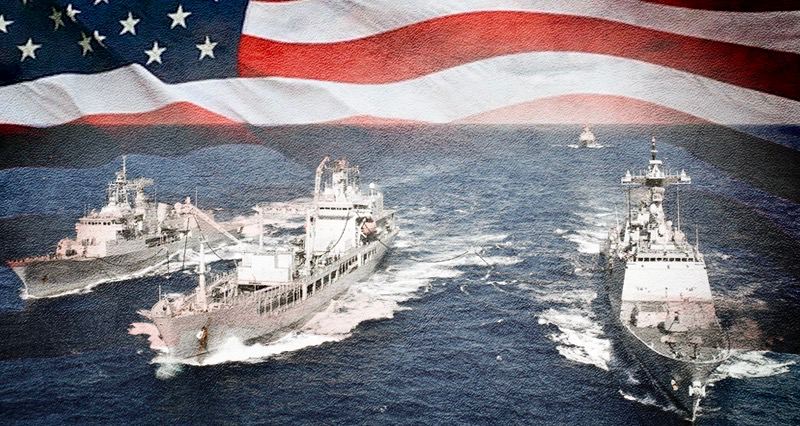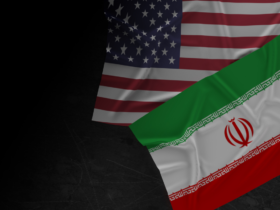Details of US navy operations in the Eastern Mediterranean.
Details of US navy operations in the Eastern Mediterranean.
By (Ret.) Turkish Staff Navy Captain Halil Özsaraç
In states, the political power that directs the elements of national power also assigns tasks to the military power. The political power, which foresees that long-term conditions will change positively or negatively, may ask the military power to prepare for more ambitious or, on the contrary, more cautious tasks than before. Military power, on the other hand, makes an effort to change the structure or combination of forces and improve combat platforms in order to achieve its tasks as the long-term tasks assigned to it by political power change or as new conditions emerge that will make these tasks difficult to perform. The process in which political power and military power persuade each other about the limits of the financial dimensions of change causes the military and political goals of that state to be revealed, albeit superficially.
For example, the fact that Türkiye has begun the design of a medium-sized aircraft carrier after building TCG Anadolu means that Türkiye’s medium and long-term goals have expanded and overflowed into the oceans.
In short, since it is understood that it will not be enough to seek defense and security only in the semi-enclosed seas around us, it is clear that Türkiye’s military force is tasked with preparing a force that can also operate in the oceans. As can be seen from the example of Türkiye, the easiest way to understand the long-term intentions of a state is to examine with an objective-minded perspective in which direction it tends to change the types and capabilities of the war platforms it plans to build or buy. Now, I would like to bring to your attention the evolutionary effort of the imperialist military power and share my assessments of what imperialism wants to do in the future.
The agony of the aged us navy
US imperialism derives its power from its operational ability to cross the oceans, which is, its navy. Therefore, radical changes in its navy also mean that the United States has changed its “strategic goals.” Numerous reports prepared by the US Congress comparing the number of pure ships in the Chinese and US navies and shipbuilding infrastructures have attracted the attention of the Turkish public recently.
In fact, in most articles using these reports as a source in Türkiye, it was also commented that “imperialism entered a period of rapid collapse against China” over the number of ships and shipbuilding speeds of the Chinese Navy that managed to surpass the US Navy. Should these reports, which the US Congress used as a tool of panic and pressure on the US Government, really be interpreted as signs of the collapse of imperialism? I am not of that opinion; I do not find the results produced by comparing only the number of ships and only up-to-date shipbuilding capabilities realistic, so I am cautious about shouting triumphs. Let’s look at the subject from different angles and looking for more details and see together what kind of future awaits the world.
When we examine the US Congressional report dated May 30, 2024, we can see that in the 21-year period between 2003 and 2024, the US Navy, which keeps the number of ships between 270-300 and is getting aged, is pursuing a comprehensive and serious evolutionary process that will last until 2054. Now, let’s look at the details of this “evolutionary rejuvenation” process that the US Navy plans to complete by 2054…
The number of warships in service in the aged US Navy is currently 296. When I am discussing the US Navy, I deliberately chose the word “aged”. Because, today, the average age of 11 US aircraft carriers between the ages of 49 and 7 is 31; the average age of 22 US cruisers between the ages of 38 and 30 is 34; the average age of 68 US submarines between the ages of 43 and 4 is 30; the average age of 70 US destroyers between the ages of 33 and 4 is 21, as can be seen, the age problem has started even in US destroyers with the most ambitious war systems.
Strategic task assigned to the US navy: Retreat to the APA in 2054 and anchor solidly to West Asia!
The US Navy made its first “change” move at the end of 2016 and forced the US Government to adopt a force structure at the end of 2017 that would increase the number of warships to 355 in 30 years. However, the US Navy, which also saw the force structure it imposed in 2017 as insufficient, submitted a newer force structure and shipbuilding program prepared in June 2023 to the US Congress in March 2024 for the approval of the Biden administration.
The first thing that draws attention in this brand-new force structure of the US Navy, which is about to be approved, is that the number of warships will be increased from 296 today to 381 by 2054, instead of 355. It is noteworthy that 134 “high tonnage surface and underwater unmanned warships” were included in the new force structure, in addition to 381 warships. And this unmanned warship is not like today’s tiny unmanned naval vessels (USV), but thousands of tons of autonomous robotic ships. As you can see, in 2054, the United States plans to use dozens of its unmanned destroyers and unmanned submarines in the world’s seas on the “challenging seas” for itself. For today’s US Navy with “rough seas” is no other than the semi-enclosed seas of West Asia extending from the Black Sea to the Persian Gulf.
It should not be overlooked that the US Navy will reduce the number of aircraft carriers from 11 to 9 in 2054 during the restructuring process. Today, while China is building an aircraft carrier every 5 years, the fact that the USA will reduce the number of aircraft carriers to 9 by 2054 shows that the US plans to withdraw its 7th fleet from Asian-Pacific (APAC) to the Asian-Pacific Americans (APA) by 2054 at the latest. At this point, we can say that even before 2054, the US will have to end its policy of surrounding China in the Asian-Pacific.
The main important issue is remarkable in the 2054 force structure of the USA and concerns all West Asian states, especially Türkiye. The US Navy has not had a frigate since 2003. The reason the US stopped building frigates in the 1990s and sold or donated its frigates to its allies and partners until 2003 was because its allies and partners in the semi-enclosed seas were keen to protect US interests. When this enthusiasm began to diminish, the US realized that it could not trust its allies and partners in West Asia, and especially that the policies of breaking the West Asian states were bankrupting, and the need to make its navy fit for war in semi-enclosed seas emerged. To that end, the US has already completed preparations to build 58 of the FFG-62 class frigates it designed a few years ago by 2054.
You see, you can be sure that in the coming years, instead of Arleigh Burke-class destroyers, there will be more talk of FFG-62 class frigates. If it had not reduced the number of corvettes from 21 to 15 in the 2054 naval combination; if it had not attempted to carry its short-range overseas landing capabilities and short-range logistical support capabilities to the astronomical level, which are never available today; I could have said that the USA was retreating to its continent.
But no, the United States, which had no intention of retreating to its own continent, It also plans to build 35 of the 4,000-ton LSM-class medium-tonnage amphibious ships it has not built since World War II by 2054. Such ships, which have a cruising range of 3,500 nautical miles, are not fit for crossing the ocean, but for crossing semi-enclosed seas. In addition, the US plans to build 13 light logistic support vessels (LSV) with a displacement of 4-5 thousand tons. These ships are also not fit for use in the oceans.
In 2054, where do you think the US plans to use so many frigates, and medium-tonnage amphibious ships, and light logistics support ships? Here are the choices:
a) Black Sea and Aegean Sea
c) Red Sea and Yemeni Sea
d) Persian Gulf and Oman Sea
e) All the above
My answer is: e) All the above!
So, do you think there is a chance that the West Asian states will meet this storm that will come from the imperialist West in 2054 without cooperation in defense and a power alliance? The “West Asian Defense and Security Alliance” must be started right now without losing any time.
What happens if not? After 30 years, the Turkish, Arab, and Persian hemispheres all have to fight for their existence in their homeland instead of their seas, that is, each West Asian state turns into Gaza and Yemen… What more can be said… Let me hope that our Arab and Persian friends have seen the seriousness of the situation…
Translation by Yunus Emre Özgün
















Leave a Reply